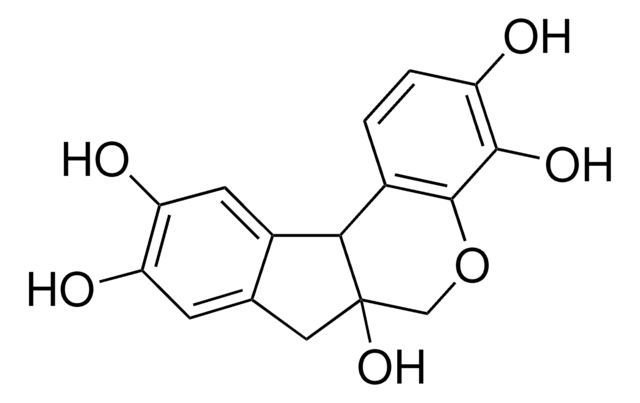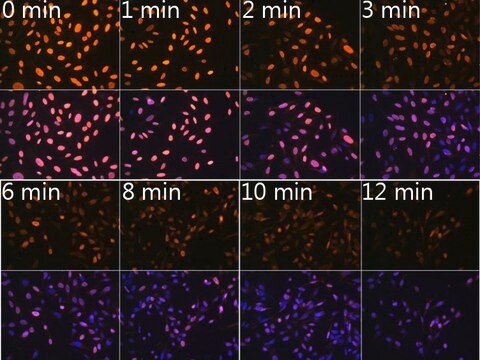推荐产品
生物源
rabbit
共軛
unconjugated
抗體表格
affinity isolated antibody
抗體產品種類
primary antibodies
無性繁殖
polyclonal
產品線
Prestige Antibodies® Powered by Atlas Antibodies
形狀
buffered aqueous glycerol solution
物種活性
human
技術
immunofluorescence: 0.25-2 μg/mL
immunohistochemistry: 1:200-1:500
免疫原序列
YHQLKDITLGTLGYGENEDNRIGLKVCKQHYKKGTMFPSNETLNIDNDVELDCVQLDLQDLSKKPPDWKNSSFFRLEFYR
UniProt登錄號
運輸包裝
wet ice
儲存溫度
−20°C
目標翻譯後修改
unmodified
基因資訊
human ... MCOLN2(255231)
一般說明
The gene MCOLN2 (mucolipin-2) is mapped to human chromosome 1p22.3. It is a member of the TRP (transient receptor potential) superfamily of non-selective cation channels. The protein localizes at the plasma membrane.
免疫原
Mucolipin-2 recombinant protein epitope signature tag (PrEST)
應用
All Prestige Antibodies Powered by Atlas Antibodies are developed and validated by the Human Protein Atlas (HPA) project and as a result, are supported by the most extensive characterization in the industry.
The Human Protein Atlas project can be subdivided into three efforts: Human Tissue Atlas, Cancer Atlas, and Human Cell Atlas. The antibodies that have been generated in support of the Tissue and Cancer Atlas projects have been tested by immunohistochemistry against hundreds of normal and disease tissues and through the recent efforts of the Human Cell Atlas project, many have been characterized by immunofluorescence to map the human proteome not only at the tissue level but now at the subcellular level. These images and the collection of this vast data set can be viewed on the Human Protein Atlas (HPA) site by clicking on the Image Gallery link. We also provide Prestige Antibodies® protocols and other useful information.
The Human Protein Atlas project can be subdivided into three efforts: Human Tissue Atlas, Cancer Atlas, and Human Cell Atlas. The antibodies that have been generated in support of the Tissue and Cancer Atlas projects have been tested by immunohistochemistry against hundreds of normal and disease tissues and through the recent efforts of the Human Cell Atlas project, many have been characterized by immunofluorescence to map the human proteome not only at the tissue level but now at the subcellular level. These images and the collection of this vast data set can be viewed on the Human Protein Atlas (HPA) site by clicking on the Image Gallery link. We also provide Prestige Antibodies® protocols and other useful information.
生化/生理作用
PAX5 (paired box protein) is responsible for transcriptional activation of MCOLN2 (mucolipin-2). In presence of low extracellular sodium MCOLN2 channel activity increases. It is also involved in recycling of glycosylphosphatidylinositol (GPI)-anchored proteins. This occurs by transfer of proteins from recycling endosomes to the cell surface through the ARF6 (ADP-ribosylation factor 6)-associated pathway.
特點和優勢
Prestige Antibodies® are highly characterized and extensively validated antibodies with the added benefit of all available characterization data for each target being accessible via the Human Protein Atlas portal linked just below the product name at the top of this page. The uniqueness and low cross-reactivity of the Prestige Antibodies® to other proteins are due to a thorough selection of antigen regions, affinity purification, and stringent selection. Prestige antigen controls are available for every corresponding Prestige Antibody and can be found in the linkage section.
Every Prestige Antibody is tested in the following ways:
Every Prestige Antibody is tested in the following ways:
- IHC tissue array of 44 normal human tissues and 20 of the most common cancer type tissues.
- Protein array of 364 human recombinant protein fragments.
聯結
Corresponding Antigen APREST73221
外觀
Solution in phosphate-buffered saline, pH 7.2, containing 40% glycerol and 0.02% sodium azide
法律資訊
Prestige Antibodies is a registered trademark of Merck KGaA, Darmstadt, Germany
免責聲明
Unless otherwise stated in our catalog or other company documentation accompanying the product(s), our products are intended for research use only and are not to be used for any other purpose, which includes but is not limited to, unauthorized commercial uses, in vitro diagnostic uses, ex vivo or in vivo therapeutic uses or any type of consumption or application to humans or animals.
未找到合适的产品?
试试我们的产品选型工具.
儲存類別代碼
10 - Combustible liquids
水污染物質分類(WGK)
WGK 1
閃點(°F)
Not applicable
閃點(°C)
Not applicable
個人防護裝備
Eyeshields, Gloves, multi-purpose combination respirator cartridge (US)
Guangbi Li et al.
American journal of physiology. Cell physiology, 317(3), C481-C491 (2019-07-04)
The transient receptor potential mucolipin 1 (TRPML1) channel has been reported to mediate lysosomal Ca2+ release that is involved in Ca2+-dependent lysosome trafficking and autophagic flux. However, this regulatory mechanism of lysosomal TRPML1 channel activity in podocytes remains poorly understood.
Christian Grimm et al.
The Journal of biological chemistry, 287(27), 22701-22708 (2012-07-04)
The transient receptor potential channels TRPML2 and TRPML3 (MCOLN2 and MCOLN3) are nonselective cation channels. They are widely expressed in mammals. However, little is known about their physiological function(s) and activation mechanism(s). TRPML3 can be activated or rather de-inhibited by
David A Zeevi et al.
Journal of cell science, 123(Pt 18), 3112-3124 (2010-08-26)
The mucolipin (TRPML) subfamily of transient receptor potential (TRP) cation channels consists of three members that play various roles in the regulation of membrane and protein sorting along endo-lysosomal pathways. Loss-of-function mutations in TRPML1 cause the neurodegenerative lysosomal storage disorder
David A Zeevi et al.
Biochimica et biophysica acta, 1772(8), 851-858 (2007-02-20)
Mucolipin 1 (MLN1), also known as TRPML1, is a member of the mucolipin family. The mucolipins are the only lysosomal proteins within the TRP superfamily. Mutations in the gene coding for TRPML1 result in a lysosomal storage disorder (LSD). This
Claudia Karacsonyi et al.
Traffic (Copenhagen, Denmark), 8(10), 1404-1414 (2007-07-31)
In mammals, the mucolipin family includes three members mucolipin-1, mucolipin-2, and mucolipin-3 (MCOLN1-3). While mutations in MCOLN1 and MCOLN3 have been associated with mucolipidosis type IV and the varitint-waddler mouse phenotype, respectively, little is known about the function and cellular
我们的科学家团队拥有各种研究领域经验,包括生命科学、材料科学、化学合成、色谱、分析及许多其他领域.
联系技术服务部门








